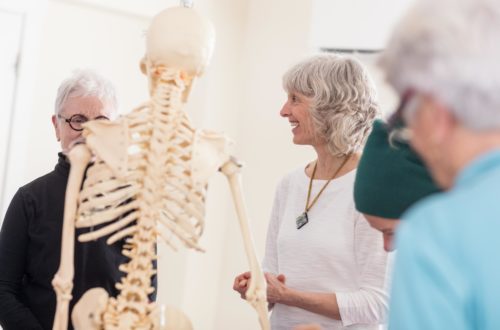
More To Say About Breathing
There can never be too much to say about breathing. Especially since it takes practice and attention to not leave it behind when we are doing the most mundane things.
James Nestor, author of Breath, The New Science of a Lost Art, provided a 30 minute video for the Feldenkrais Summit this past May. I had talked to people about his book, listened to radio interviews and watched some of his YouTube videos. None of them moved me to buy his book, until I watched the summit video. I was intrigued by his explanation of the size and position of the mouth and throat and how over time, that space has narrowed in humans, resulting in an increased incidence of mouth breathing and sleep apnea. That was the tipping point to buy his book and take a deeper dive.
Paradoxically, he turned to “free divers”, folks who swim deep in open waters without oxygen tanks or snorkels, in order to understand how they stop their breath for 5, 6 and even up to 9 or 11 minutes at a time without negative consequences. What he learned provided keys to learning better breathing.
Breathing and Change
Many of us do not have the ambition to free dive, but many of us would like to feel better. In order to feel better we need to know what is interfering. Paying attention is the first step. Making room in our attention to notice helps. Learning what to pay attention to and what to do with that information over time puts us on the path to making changes that make a difference.
For the past two years I have been studying breathing in advanced trainings with Larry Goldfarb, the Feldenkrais® way.
Coordinating my breath with whatever I am doing helps me to pace myself. It gives me time to think and make decisions. It interferes with the urgency or anxiety that becomes obvious when I am trying to do too much or pressing forward with an agenda. Pausing, backing up, paying attention to my breathing, and making a change in my movement helps me find a more satisfying way of working through challenges. Using this way to move through my day has taken time and patience. It didn’t occur overnight, but it did take an intention of wanting something better. Considering that we inhale and exhale on average 20,000 times a day, I had and have plenty of opportunities to practice. And you can too!
Ribs and Breathing
The diaphragm is the primary muscle of respiration. When it contracts air moves into the lungs and when it relaxes air moves out. When air moves into the lungs, the ribs spread wider apart and when air leaves the lungs, the ribs move closer together. Interestingly enough, our postural muscles, our conditioning and our habits determine how much and when the ribs move.
For some people the ribs move more during the inhale; for others, they move more on the exhale. To find out how your ribs move, sit or lie down in a quiet place. Wait to get settled and then begin to notice your ribs moving with each breath. Place your hands on any part of your ribs, lower or upper. Notice do you feel them move? Wait a minute. It may take a bit for your brain to register the information. Once you sense movement, can you tell if your ribs move more or further when you are inhaling or exhaling? Do it for a number of days in a row and see if it changes. It might.
You may notice that with each breath you feel something different. Again, no problem. Over time you may begin to notice a pattern. In the beginning, just notice what is. Don’t try to change it. Which is easier to notice? Inhaling or exhaling? Which lasts longer? Which moves your ribs more? Place your hands in different places on your ribs. How does that change what you notice? Is there something else that you discover as you take time to pay attention? How long can you pay attention to your breathing? As you pay attention over time, does that change?
Practice Time and Benefits
Bringing your attention to your breathing most likely changes the breath. That’s OK. It does take practice catching yourself breathing, especially when you are doing something else. Beginning quietly helps to eliminate the “environmental noise”-internally and externally.
As with many deeply ingrained patterns, change does take time. Setting up a breathing practice time can help.
Losing weight, decreasing blood pressure, recognizing and managing anxiety all improve when we use the breath to help support the changes that we seek.
This summer whether you are in quiet reflection or on an active adventure, don’t forget to bring along an awareness of your breath. It might be just the key that helps give an extra moment providing a solution to an urgent problem or an extra breath that slows you down, allowing space for recognizing appreciation.
As I conclude this post and continue to allow my breathing and writing to be more enjoyable, I think, “Yes, we can become kinder people.” And we absolutely need that on a global scale! Any small movement in that direction is worth all the time that we take!




